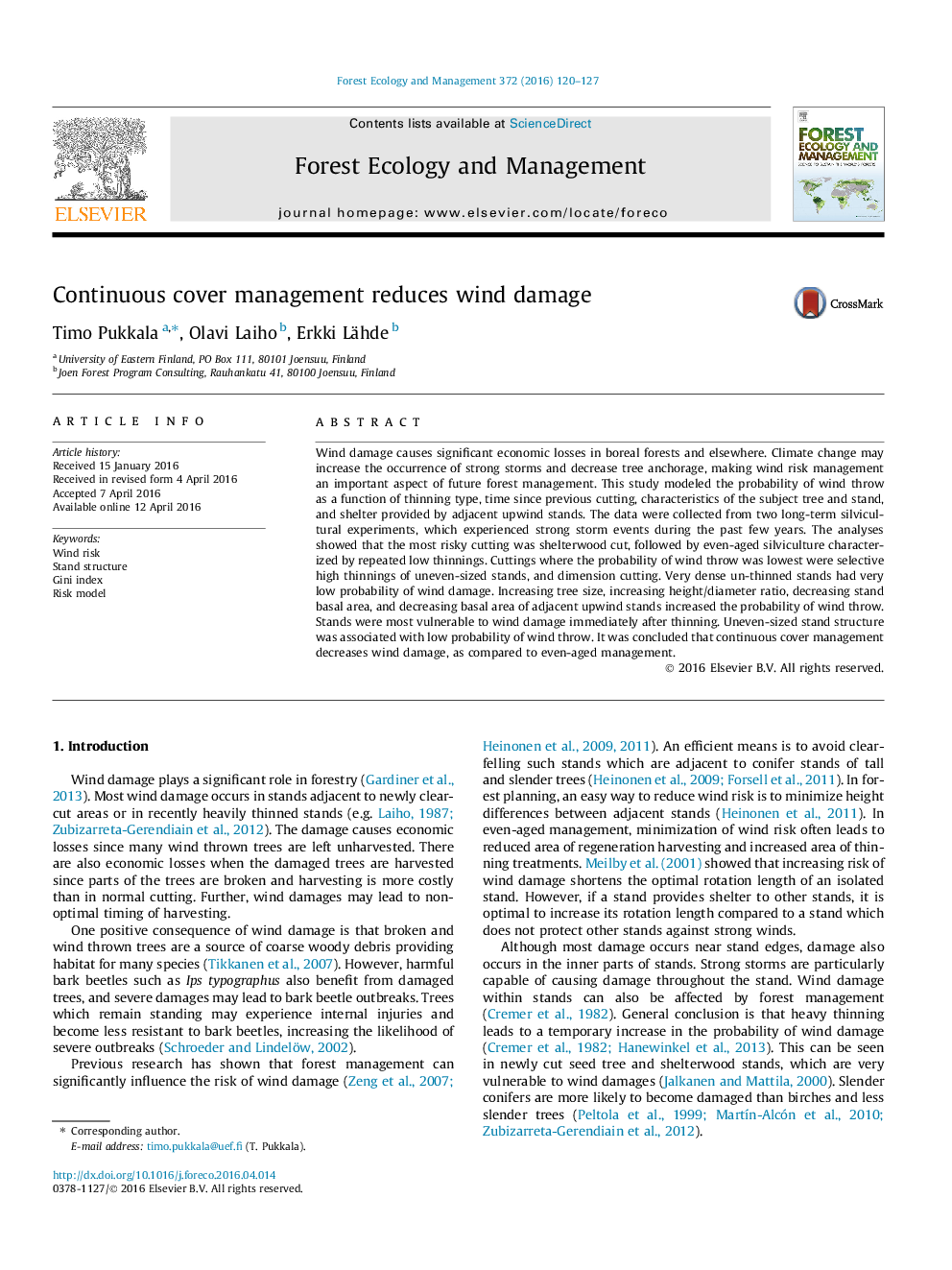| Article ID | Journal | Published Year | Pages | File Type |
|---|---|---|---|---|
| 6542287 | Forest Ecology and Management | 2016 | 8 Pages |
Abstract
Wind damage causes significant economic losses in boreal forests and elsewhere. Climate change may increase the occurrence of strong storms and decrease tree anchorage, making wind risk management an important aspect of future forest management. This study modeled the probability of wind throw as a function of thinning type, time since previous cutting, characteristics of the subject tree and stand, and shelter provided by adjacent upwind stands. The data were collected from two long-term silvicultural experiments, which experienced strong storm events during the past few years. The analyses showed that the most risky cutting was shelterwood cut, followed by even-aged silviculture characterized by repeated low thinnings. Cuttings where the probability of wind throw was lowest were selective high thinnings of uneven-sized stands, and dimension cutting. Very dense un-thinned stands had very low probability of wind damage. Increasing tree size, increasing height/diameter ratio, decreasing stand basal area, and decreasing basal area of adjacent upwind stands increased the probability of wind throw. Stands were most vulnerable to wind damage immediately after thinning. Uneven-sized stand structure was associated with low probability of wind throw. It was concluded that continuous cover management decreases wind damage, as compared to even-aged management.
Related Topics
Life Sciences
Agricultural and Biological Sciences
Ecology, Evolution, Behavior and Systematics
Authors
Timo Pukkala, Olavi Laiho, Erkki Lähde,
